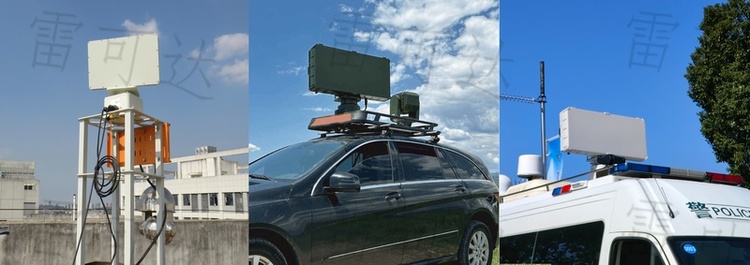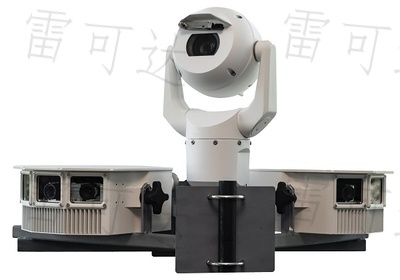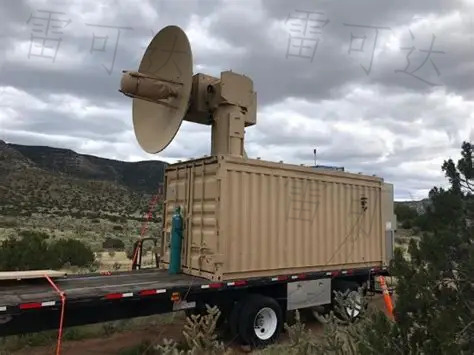As a core component of low-altitude security, counter-drone technology primarily consists of two key aspects: detection and countermeasures. With the widespread application of drones in civil fields—such as inspection operations, logistics delivery, and agricultural spraying—their convenience has become increasingly evident. However, the risk of drones being misused has also risen accordingly. Especially after cities like Shenzhen have promoted low-altitude airspace opening pilots, urban low-altitude management faces greater challenges: while supporting legitimate applications, it is also necessary to prevent security risks. The market’s demand for efficient and precise counter-drone solutions has become increasingly urgent.
1. Drone Detection Technologies
1. Radar Detection Technology
Radar detection is a mainstream method in counter-drone systems, primarily used to identify moving aerial targets. Traditional air defense radars often employ X/Ku bands and pulse-Doppler technology, which are suitable for monitoring large aircraft but often have limited detection capabilities for “low, small, and slow” drones.
Radars specifically designed for such targets typically feature lower speed detection thresholds and higher operating frequency bands, supporting all-weather operation and adaptability to harsh conditions. For example, the DSR-3XDrone radar from the U.S.-based DGS company can detect micro-drones at distances of up to 5 kilometers.

Chinese companies have also made significant breakthroughs in this field. Take the Xuanwu XW/SR226 series low-altitude security radar from Wuhan Lakeda as an example. This equipment consists of a radar array, mechanical turntable, and power adapter, and is widely used in critical areas such as prisons, exhibitions, and military bases. It can accurately obtain target information including azimuth, distance, altitude, and speed. This series of radars features a high discovery rate for ultra-low-altitude targets, strong environmental adaptability, and a low false alarm rate, with a maximum detection range of 10 kilometers.
2. Electro-Optical Detection Technology
Electro-optical detection relies on visible light and infrared sensor imaging, with the advantage of providing intuitive images for target identification and automatic tracking. However, its performance is easily affected by the field of view, weather conditions, and background complexity, resulting in a relatively high target loss rate. When combined with AI image recognition technology, the discrimination and tracking capabilities of electro-optical systems are significantly enhanced.

For instance, the SkyPatriot system from the UK-based Rinicom company can automatically exclude interfering targets and identify drones as small as 2 pixels.
2. Countermeasure Technologies: Hard-Kill and Physical Interception
1. High-Energy Laser Weapons
High-energy lasers are a “hard-kill” method that destroys target drones through high temperatures. They offer advantages such as rapid firing speed, low interception cost, and high strike accuracy. However, their performance is susceptible to weather conditions like rain and fog. The U.S. THOR system claims to be capable of shooting down 50 drones in a single engagement.

2. Physical Interception Technologies
Physical interception technologies include net guns, drone-mounted net capture devices, or launching fiber strips to entangle propellers. For example, an interceptor developed by the U.S. DARPA can support multi-target vehicle-mounted interception, while Canada’s Aerialx “Drone Bullet” can autonomously collide with single targets or drone swarms.
3. Challenges and Development Directions for Urban Counter-Drone Operations
Current Challenges:
- Building Obstructions: High-rise buildings affect detection sightlines, making low-altitude targets easy to lose;
- Signal Interference: Complex WiFi, broadcast, and communication signals in urban areas impact the stability of radio frequency detection;
- Usage Restrictions: High-power jamming or laser devices may interfere with civilian communications and even pose risks to personal safety.
Development Strategies:
- Integration of Policies and Regulations: Establish comprehensive drone management policies to standardize flight behaviors;
- Intelligent Monitoring Upgrades: Enhance monitoring equipment capabilities through AI algorithms to achieve automatic drone identification and real-time alerts;
- Deceptive Jamming Technology: Use AI to learn drone signal characteristics, generate deceptive signals to seize control, and achieve low-power, high-efficiency jamming with minimal impact on the surrounding environment.
Conclusion
As drones become further integrated into daily life, urban low-altitude security management must strike a balance between convenience and safety. Through the collaborative application of distributed detection networks, intelligent countermeasure systems, and deceptive jamming technologies, normalized monitoring and precise handling can be achieved, providing a solid foundation for urban low-altitude security.
This article systematically outlines key counter-drone technologies and development trends, serving as a reference for professionals and researchers in security, drone regulation, and smart city-related fields.